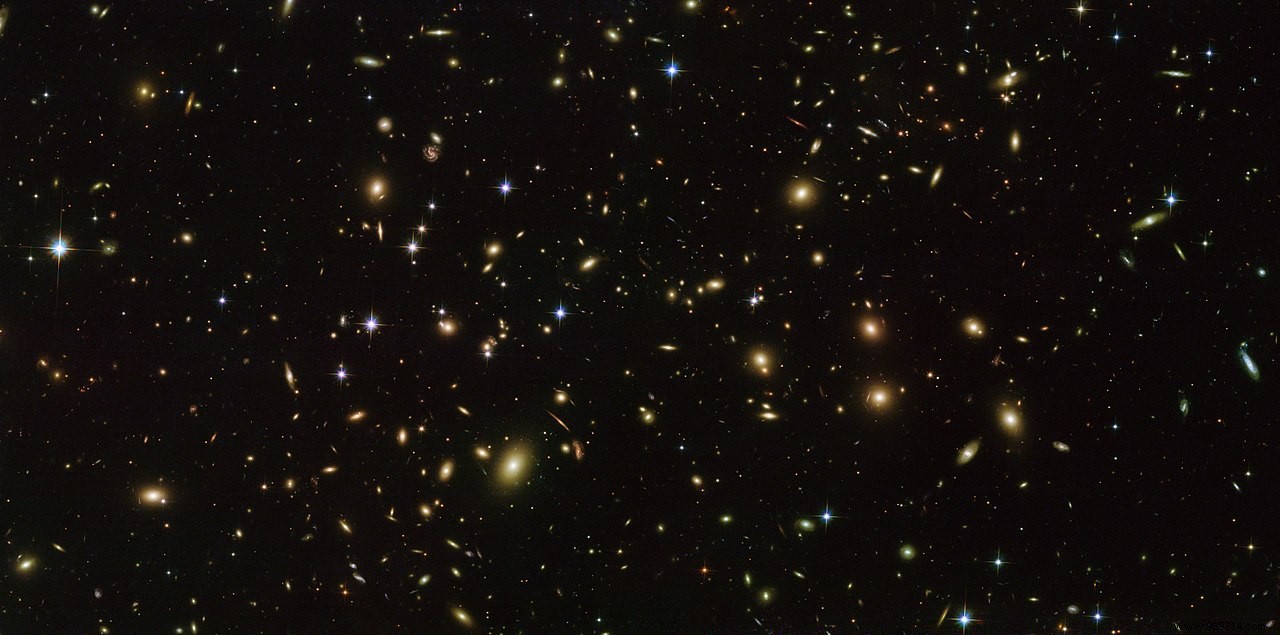By calculating the mass of hundreds of galaxy clusters, researchers have accurately estimated the amount of matter (baryonic and dark) contained in the Universe. Details of their work are published in The Astrophysical Journal .
We have known for a long time that the Universe is made up of about 5% baryonic matter, with which we can interact, and about 27% dark matter, which does not does not emit, absorb or reflect any light. The remaining 68% is believed to be dark energy, a repulsive "force" opposing gravity and responsible for accelerating the expansion of the Universe.
In other words, there would be about 32% matter and 68% energy in the cosmos. As we can see, there are many "surroundings". The fact is that accurately measuring the total amount of matter in the Universe is one of the main goals of modern cosmology. A team from the University of California, Riverside, tried it anyway. It claims to have the best model to date of the balance between all matter and energy in the Universe.
As part of this work, the researchers developed a new tool called GalWeight. Crudely, this allowed them to calculate the mass of a cluster of galaxies by measuring the orbits of individual galaxies.
Applying this to 756 other clusters cataloged in data from the Sloan Digital Sky Survey, the team was then able to compare these results to computer simulations of the formation of the clusters of galaxies. By analyzing which simulated conditions most closely matched the observations, the researchers were then able to determine the most likely amount of matter in the Universe.

Result:material represents 31, 5 (± 1.3%) of the total content of the Universe. The 68.5% remaining are therefore dark energy.
“To put this amount of matter into context, if all matter in the Universe were evenly distributed in space, it would correspond to an average mass density equal to only six hydrogen atoms per cubic meter" , explains Mohamed Abdullah, the main author of this work. “However, since we know that 80% of matter is actually dark matter, in reality most of this matter is not made up of hydrogen atoms but rather some type of matter that cosmologists do not yet understand" .
Indeed, due to its incredible influence, dark matter is now considered one of the thorniest problems in modern astrophysics.
Many candidate particles have been proposed, such as axions, dark photons or weakly interacting massive particles called WIMPs. But the fact is that all these particles are still hypothetical. And so far, no developed experience has been able to confirm their existence.
Dark energy also poses a lot of problems for cosmologists since, like dark matter, it is completely invisible to us. But we have to make the effort to find it. A better understanding of this "energy" would indeed allow us to understand our origins, but also the destiny of the Universe.